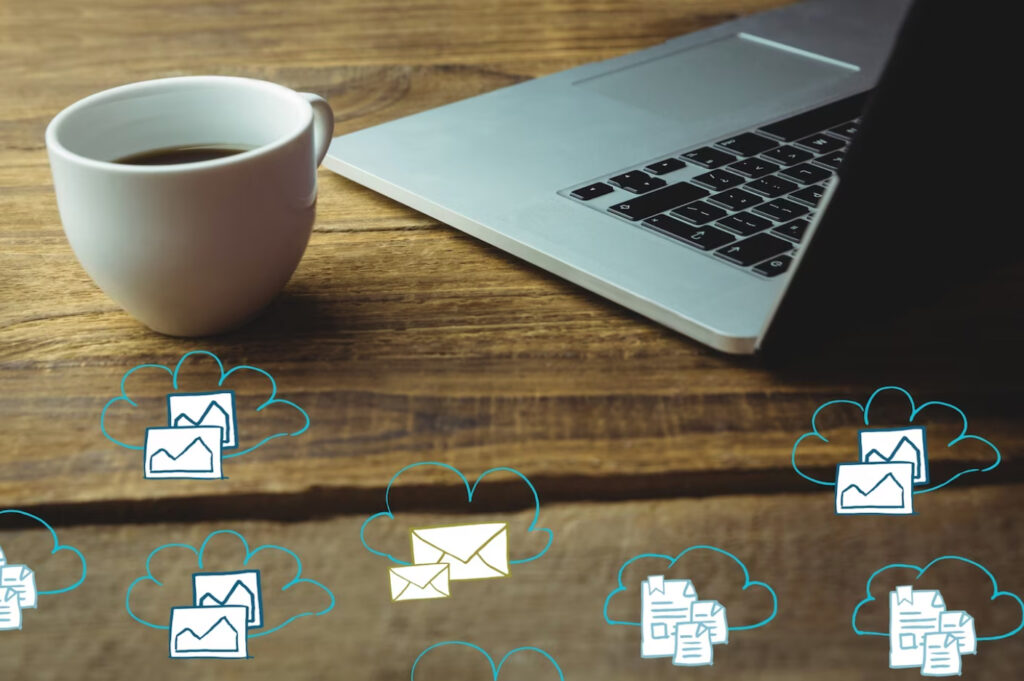In an era characterized by constant technological advancements and evolving consumer preferences, staying ahead of the curve is imperative for businesses of all sizes. Email marketing automation guide represents the cutting edge of marketing tactics, and understanding its core principles can be a game-changer.
At its core, email marketing automation refers to the use of software and technology to automate and streamline the process of sending emails to a targeted audience. Instead of manually sending individual emails to your subscribers, automation allows you to create a set of rules and triggers that determine when and to whom specific emails are sent. This saves an incredible amount of time and enables businesses to deliver highly personalized content to their audience.
But why does email marketing automation matter so much in the first place?
Setting Up Your Email Marketing Automation
Now that you understand the significance of email marketing automation, let’s explore how to set up this powerful tool effectively. The process begins with a series of strategic steps that lay the foundation for your automated campaigns.
1. Choose the Right Tool
Selecting the appropriate email marketing automation platform is paramount to your success. Different businesses have varying needs and budgets, so finding a solution that aligns with your specific requirements is essential. Consider factors such as user-friendliness, scalability, integration capabilities, and the range of features offered. Popular options include platforms like Mailchimp, HubSpot, and ActiveCampaign.
2. Segment Your Audience
One-size-fits-all doesn’t work in email marketing. To truly engage your subscribers, divide them into segments based on demographics, behavior, and preferences. Segmentation allows you to send targeted messages that resonate with specific groups of subscribers. For instance, you can create segments for new subscribers, loyal customers, or those who’ve shown interest in particular products or services.
3. Create Automated Workflows
Automated workflows are the heart of this email marketing automation guide. These are pre-defined email sequences triggered based on specific actions or events. Think of them as personalized customer journeys. For example, when someone signs up for your newsletter, you can set up a workflow that sends a welcome email immediately, followed by a series of onboarding emails, product recommendations, and more. This automated approach ensures that subscribers receive relevant content at the right time.
4. Integrate Data Sources
To maximize the effectiveness of your email marketing automation, it’s crucial to integrate data sources like your Customer Relationship Management (CRM) system and other relevant databases. This integration lets you access a comprehensive view of your subscribers, including their purchase history, preferences, and interactions with your brand. With this valuable data, you can craft highly personalized and targeted email campaigns.
Following these steps’ll establish a solid foundation for your email marketing automation journey. The right tool, thoughtful segmentation, well-designed workflows, and integrated data sources will set the stage for creating compelling automated email campaigns.
In the next section, we’ll delve into the art of crafting engaging and conversion-focused emails that will captivate your audience and drive results.
Crafting Effective Automated Email Campaigns
Creating compelling automated email campaigns is a critical aspect of email marketing automation. These campaigns are your opportunity to connect with your audience, convey your message effectively, and drive them towards desired actions. Let’s explore the key elements of crafting emails that leave a lasting impression.
1. Compelling Content
Your email’s subject line and content must be engaging and relevant to your audience. The subject line serves as the first impression, so make it enticing without being misleading. Your email’s content should be clear, concise, and valuable. Address the recipient’s pain points, offer solutions, and showcase your unique value proposition. Use storytelling techniques to make your emails relatable and memorable.
2. Visual Appeal
The visual aspect of your emails plays a significant role in capturing your recipients’ attention. Utilize eye-catching images, graphics, and templates that align with your brand’s aesthetics. Ensure that the email is visually appealing on both desktop and mobile devices, as many people check their emails on smartphones.
3. Call to Action (CTA)
Every email should have a clear and prominent call to action (CTA). Whether it’s encouraging subscribers to make a purchase, sign up for a webinar, or download an e-book, the CTA guides recipients on what steps to take next. Use action-oriented language in your CTA buttons, such as “Shop Now,” “Learn More,” or “Get Started.”
4. Timing
The timing of your automated emails can significantly impact their effectiveness. Pay attention to when your audience is most active and engaged with your content. Experiment with different sending times and analyze open rates and click-through rates to determine the optimal timing for your specific audience.
Remember that consistency in branding, tone, and messaging across your email campaigns helps build brand recognition and trust. A well-crafted automated email should not feel like a generic message but rather a personalized communication that resonates with each recipient.
As you continue to refine your automated email campaigns, don’t hesitate to test different elements, such as subject lines, visuals, and CTAs, through A/B testing, which we’ll discuss in the next section. This iterative approach ensures that you’re continuously improving and adapting your email strategy to deliver the best results.
Next, we’ll explore how testing and optimization play a pivotal role in enhancing your email marketing automation efforts.
Testing and Optimization
In the ever-evolving landscape of email marketing automation, testing and optimization are the gears that keep your campaigns finely tuned and performing at their best. By consistently refining your approach, you can ensure that your emails not only reach your audience but also drive the desired actions effectively.
1. A/B Testing
A/B testing, also known as split testing, is a fundamental technique in email marketing automation. It involves sending two versions of an email to a small portion of your subscribers and determining which version performs better. Elements to test include:
- Subject Lines: Experiment with different subject lines to see which ones result in higher open rates.
- Visuals: Test variations of images, layouts, and design to gauge their impact on engagement.
- Call to Action (CTA): Alter the wording, color, or placement of your CTA buttons to measure their effectiveness.
- Email Copy: Try different messaging styles, tones, and lengths to see which resonates most with your audience.
Through A/B testing, you can refine your email elements based on data-driven insights, leading to better-performing campaigns.
2. Analyzing Data
Effective optimization requires a keen eye on data. Monitor open rates, click-through rates, and conversion data for each email campaign. Pay attention to subscriber behavior and track which emails lead to desired actions, such as purchases or sign-ups. Tools like Google Analytics can provide in-depth insights into user interactions with your emails and website.
3. Iterate and Refine
Based on the results of your A/B tests and data analysis, continuously improve your email campaigns. Implement the winning variations and iterate on your content and design. Over time, you’ll fine-tune your emails to better resonate with your audience, increasing engagement and conversions.
4. Responsive Design
In today’s mobile-centric world, ensuring that your emails are mobile-friendly is paramount. Responsive design ensures that your emails display correctly on devices of all sizes. An email that is difficult to read or interact with on a smartphone can lead to high bounce rates and decreased engagement.
By optimizing your email campaigns through A/B testing, data analysis, iterative refinement, and responsive design, you’ll stay ahead in the ever-competitive world of email marketing automation. The ability to adapt and improve based on real-time data is a key advantage that automation offers.
Now, let’s delve into how you can measure the success of your email marketing automation efforts and make data-driven decisions for future campaigns.
Measuring Success
In the realm of email marketing automation, the ability to measure success is pivotal. It’s not enough to deploy campaigns; you must track their impact, make data-driven decisions, and continuously refine your approach to achieve the best results.
1. Key Metrics
Tracking key metrics is essential to gauge the effectiveness of your email marketing automation efforts:
- ROI (Return on Investment): Measure the financial returns from your email campaigns, including revenue generated compared to the cost of your email marketing tools and efforts.
- Conversion Rates: Analyze the percentage of recipients who take the desired action after receiving your email, whether it’s making a purchase, signing up for a webinar, or downloading a resource.
- Engagement: Keep an eye on metrics like open rates, click-through rates, and the number of shares or forwards your emails receive.
- List Growth: Monitor the growth of your email subscriber list over time.
- Unsubscribe Rate: Track how many subscribers opt out of your email list. A high unsubscribe rate may signal issues with your content or frequency.
By regularly measuring these metrics, you can identify trends, spot areas that need improvement, and replicate successful strategies in future campaigns.
2. Customer Feedback
Direct input from your subscribers is invaluable. Encourage them to provide feedback through surveys or by responding to your emails. Their insights can help you refine your content, design, and overall email marketing strategy.
3. Long-Term Analysis
Evaluate the long-term impact of email marketing automation on your business. This involves looking beyond immediate results and considering how automation affects customer retention, brand loyalty, and customer lifetime value. It’s often the cumulative effect of automation over time that truly demonstrates its value.
As you gather and analyze data, remember that the goal is not just to measure success but also to gain insights that drive improvements. Use the data to adapt your strategies, test new approaches, and continually refine your email marketing automation efforts.
In conclusion, email marketing automation is a dynamic and data-driven discipline that offers significant advantages in today’s digital landscape. By setting clear objectives, tracking key metrics, listening to your audience, and conducting long-term analysis, you can harness the full potential of automation to drive business growth.
Conclusion and Next Steps
In this comprehensive guide, you’ve gained a deep understanding of how email marketing automation can save time and drive conversions. From choosing the right tools to crafting compelling campaigns, conducting A/B tests, and measuring success, you’ve learned the essential steps to succeed in the world of email marketing automation.
Now, it’s time to put your knowledge into action. Implement what you’ve learned and continually explore advanced strategies to further optimize your email marketing automation efforts. By staying current with industry trends and adapting to changing consumer behaviors, you’ll be well on your way to achieving marketing success.
Don’t miss out on the benefits of automation—get started today and watch your business thrive in the digital age!


